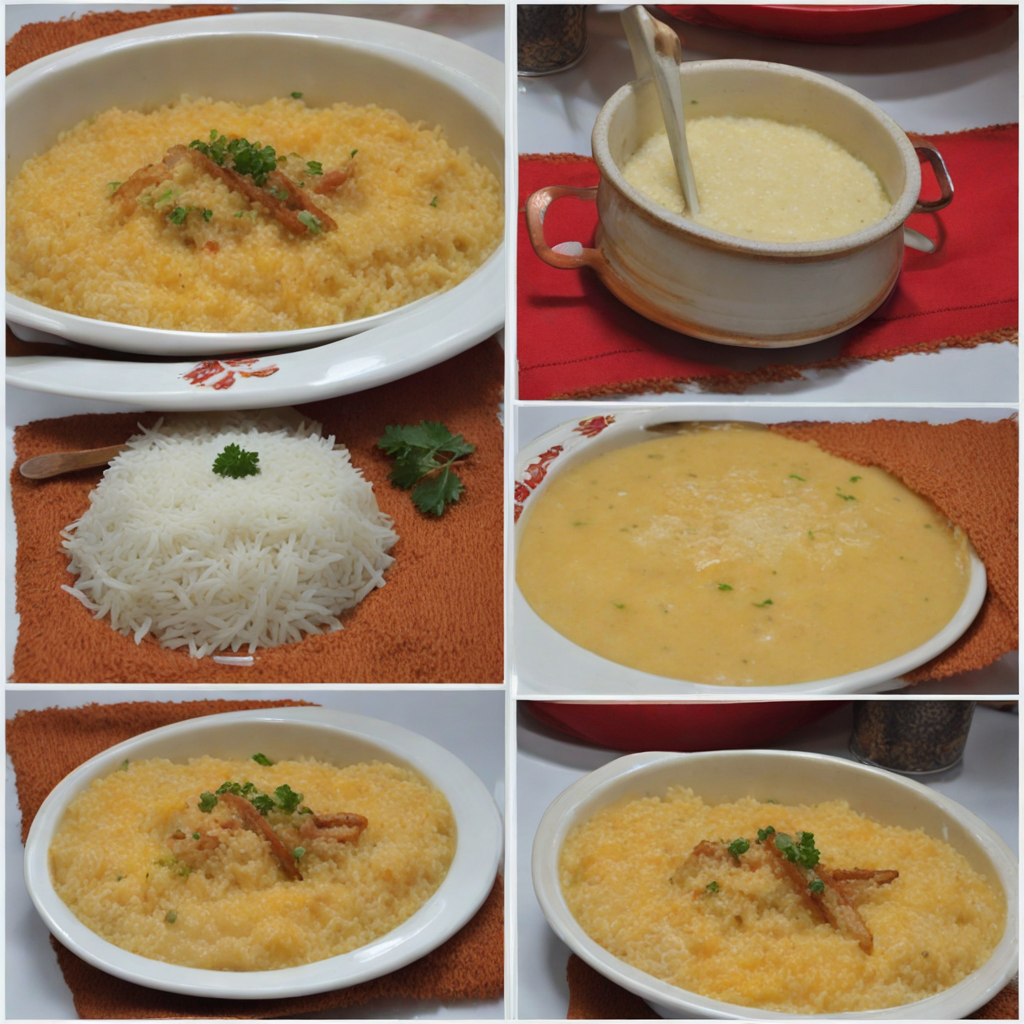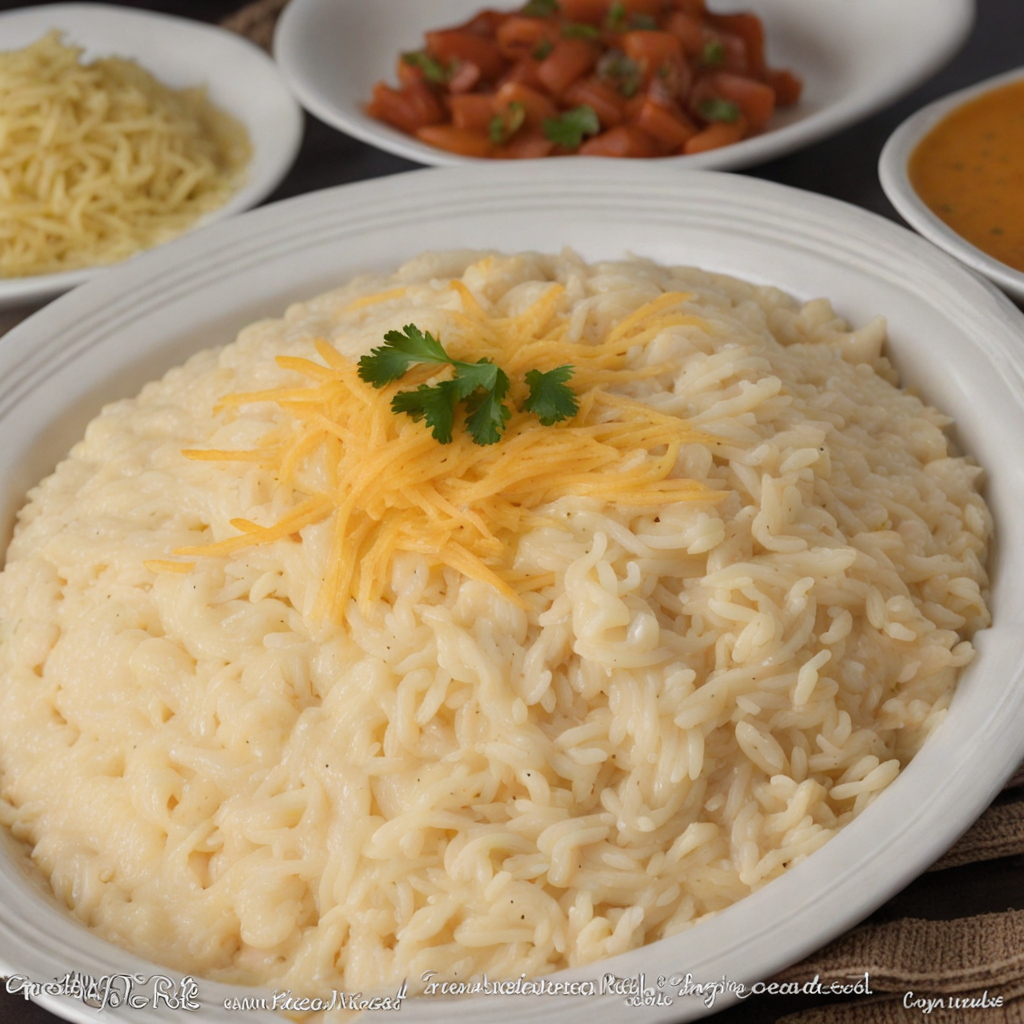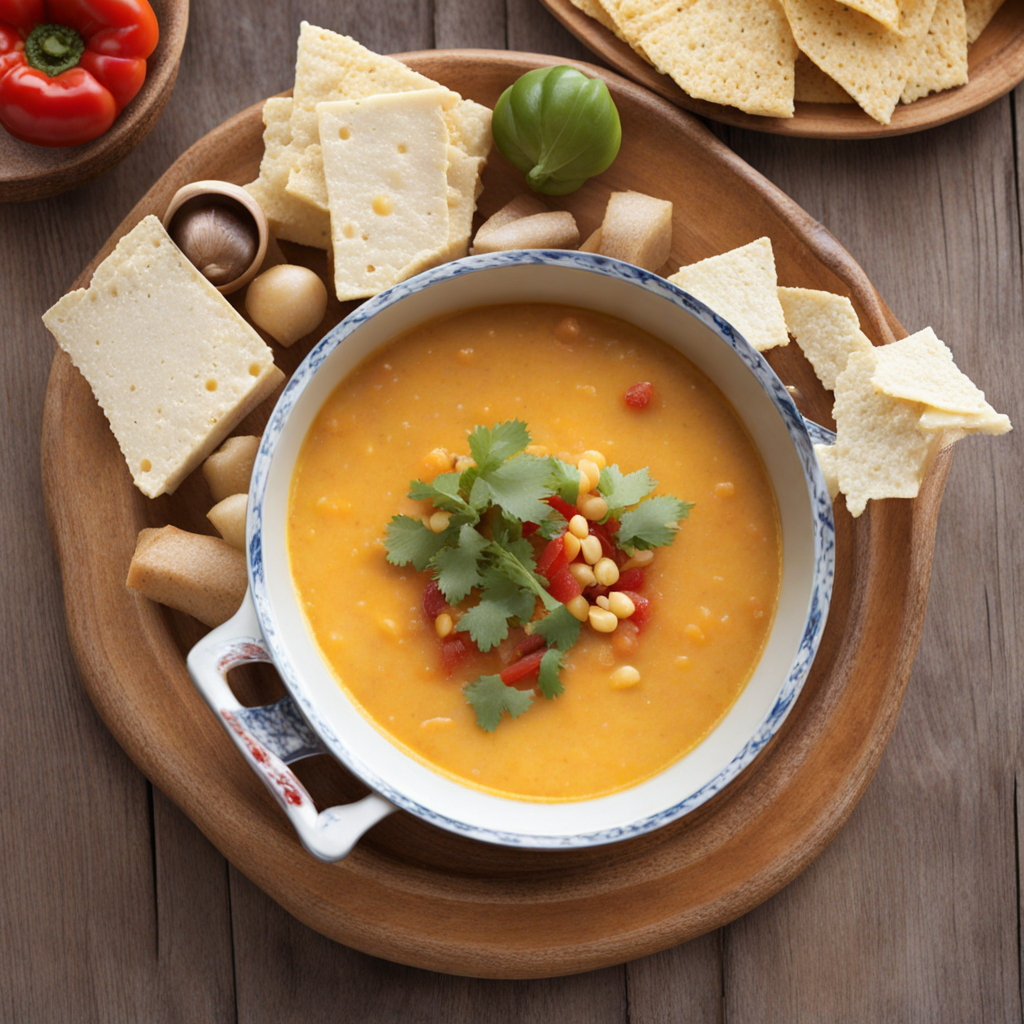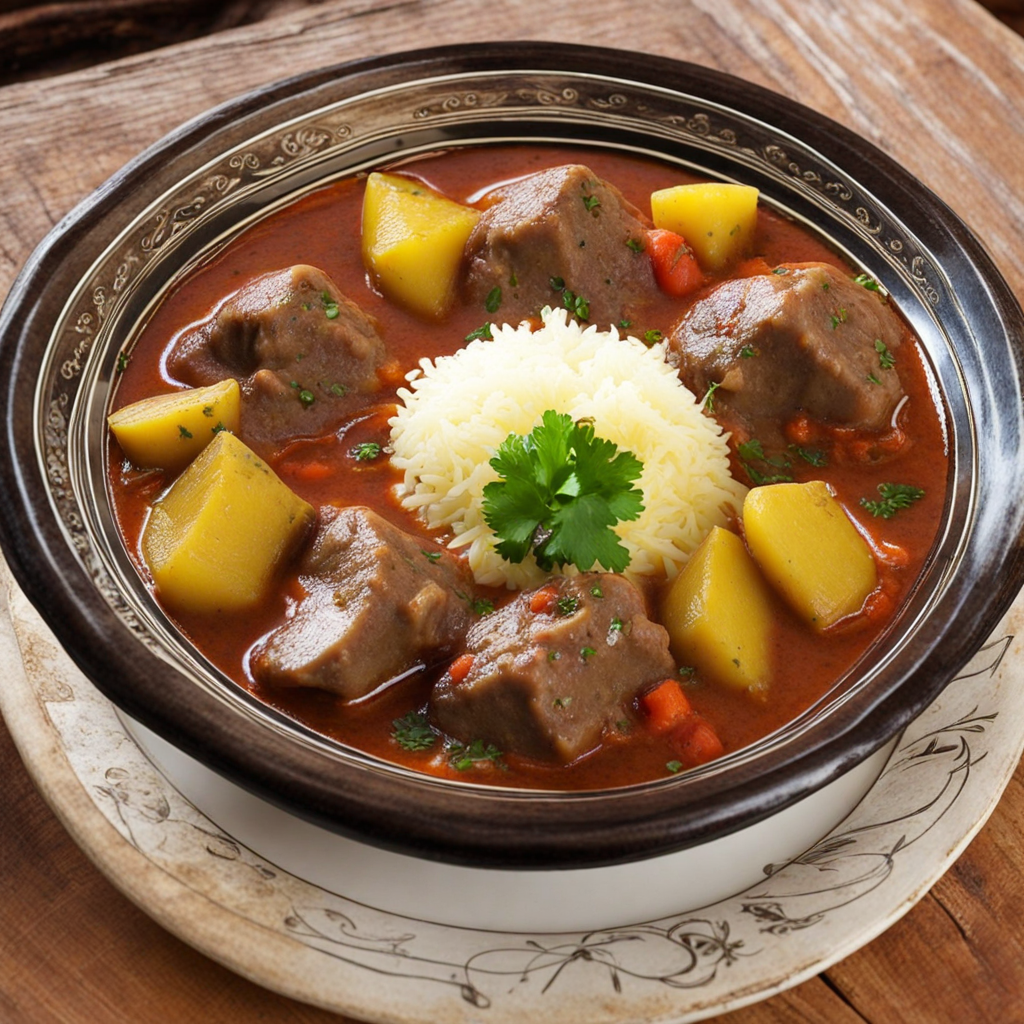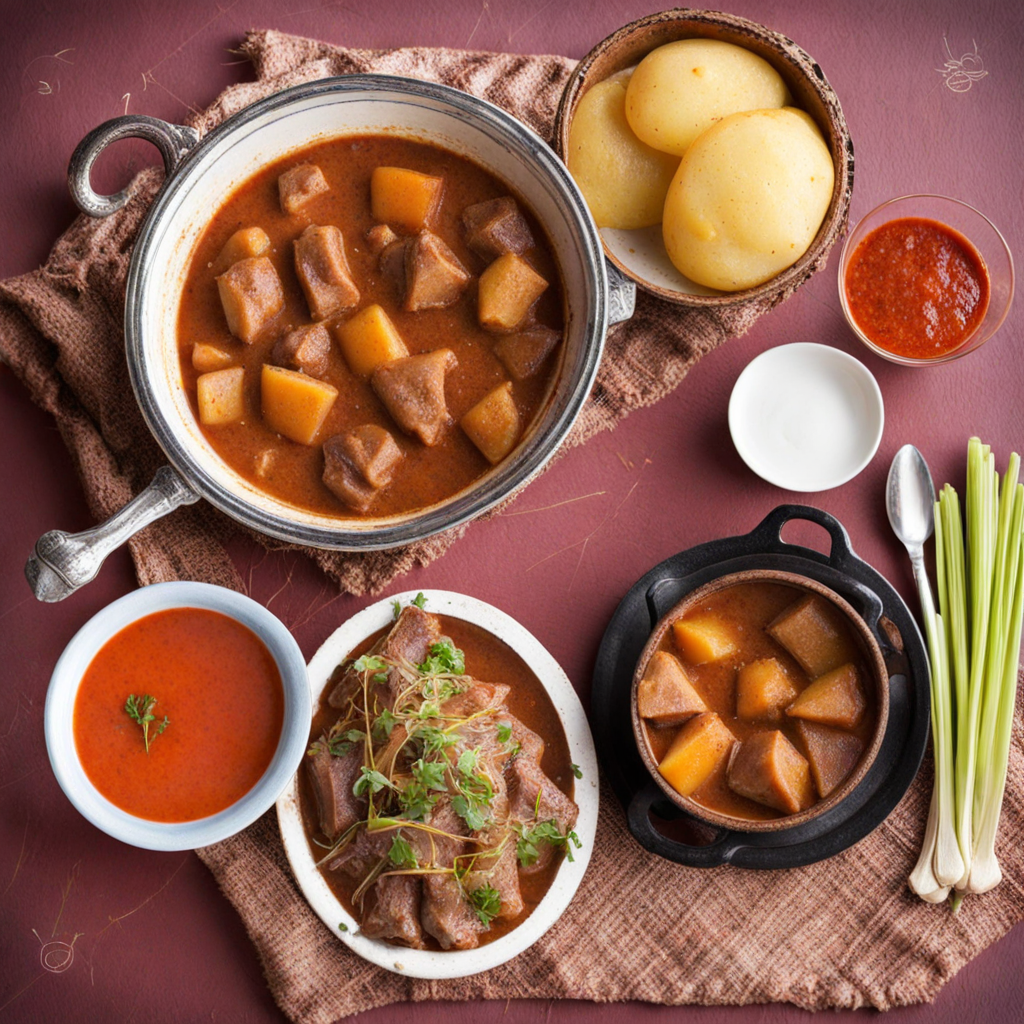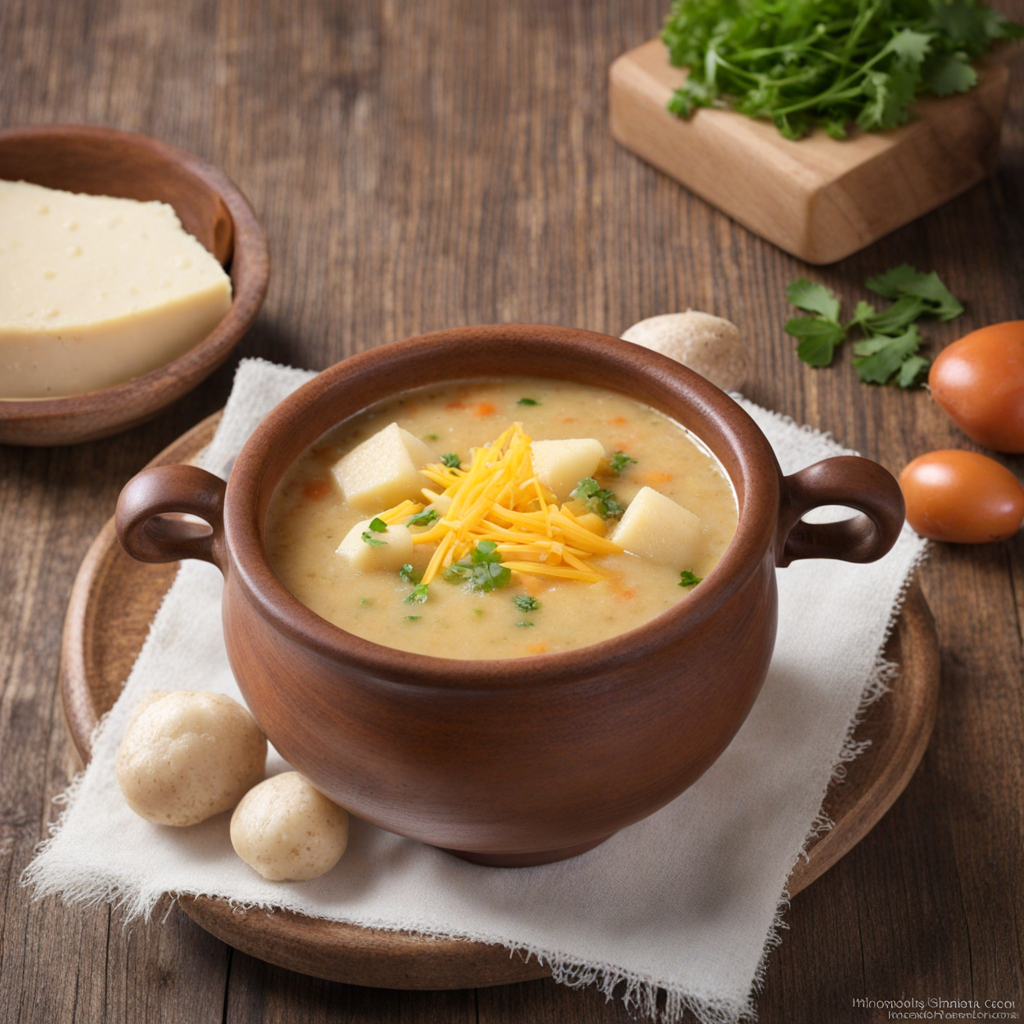Arroz con Queso
Arroz con Queso, a delightful Bolivian dish, is a comforting and flavorful combination of rice and cheese that showcases the simplicity and richness of traditional Bolivian ingredients. The base of the dish is typically made with long-grain rice, which is cooked to fluffy perfection. The rice absorbs the subtle flavors of the seasonings used, creating a warm and inviting texture that serves as the perfect canvas for the star ingredient—cheese. The cheese used can vary, but it is often a local variety, such as queso fresco or a soft, creamy cheese that melts beautifully, enhancing the overall creaminess of the dish. As the rice cooks, it is often infused with sautéed onions, garlic, and even a hint of chili or bell peppers, adding layers of flavor to the dish. This aromatic base complements the cheese, making every bite a delightful experience. The dish is sometimes enriched further with the addition of herbs such as parsley or cilantro, which add a fresh touch and a pop of color, making Arroz con Queso not only delicious but also visually appealing. Served hot, Arroz con Queso is often enjoyed as a main course or a side dish, making it versatile for various meals. It pairs wonderfully with a side of fresh salad or a zesty sauce, allowing diners to customize their experience. The creamy, cheesy goodness of this dish encapsulates the warmth of Bolivian hospitality, inviting you to savor each mouthful while discovering the unique taste of the Andes. Whether you're a cheese lover or simply looking to explore new flavors, Arroz con Queso promises to be a memorable addition to your culinary journey.
How It Became This Dish
Arroz con Queso: A Culinary Journey Through Bolivia's Flavors and Heritage Arroz con Queso, translating to "rice with cheese," is a beloved dish that encapsulates the heart and soul of Bolivian cuisine. Its roots, like many traditional dishes, intertwine with the cultural, economic, and historical tapestry of the Andean region. Exploring the origins, cultural significance, and evolution of this dish reveals not only the flavors of Bolivia but also the stories of its people. Origins of Arroz con Queso The origins of Arroz con Queso can be traced back to the indigenous cultures of the Andes, where food has always served as a reflection of the land and its resources. Before the arrival of the Spanish in the 16th century, the indigenous populations cultivated a variety of crops, including potatoes, quinoa, and corn. These staples formed the backbone of their diets. Rice, a key ingredient in Arroz con Queso, was introduced to Bolivia through Spanish colonizers, who brought it from their own culinary traditions. Initially, rice was reserved for the elite and was considered a luxury item. Over time, however, it became integrated into the daily diet of the Bolivian people. The introduction of cheese, another crucial component of Arroz con Queso, has roots in both indigenous and European practices. Indigenous communities in Bolivia had long made cheese from llama and cow milk, while European settlers brought techniques for cheese production, leading to a variety of cheeses that would eventually become staples in Bolivian cuisine. Cultural Significance Arroz con Queso is more than just a dish; it carries profound cultural significance. In Bolivia, food is a central element of social gatherings, celebrations, and rituals. Arroz con Queso is often served at family gatherings and communal feasts, reflecting the importance of sharing meals and fostering connections among relatives and friends. Its simplicity belies the depth of its cultural resonance; it is a comfort food that evokes nostalgia and a sense of belonging. In Bolivian culture, food is intertwined with identity. The act of preparing and sharing Arroz con Queso is a way to honor ancestral traditions while simultaneously adapting to modern influences. The dish is emblematic of the fusion of indigenous and Spanish culinary practices, serving as a reminder of Bolivia’s complex history and the resilience of its people. Evolution Over Time As Bolivia has modernized, the preparation and presentation of Arroz con Queso have evolved. Traditionally, the dish is made with simple ingredients: rice, cheese, and sometimes butter or cream. The cheese used can vary, with popular choices being “queso fresco” (fresh cheese) or “queso de cabra” (goat cheese). These cheeses add a creamy texture and rich flavor that complements the fluffy rice. In contemporary Bolivia, Arroz con Queso has been embraced by chefs and home cooks alike, leading to innovative variations that incorporate local ingredients and flavors. For example, some cooks add spices, vegetables, or meats, creating a heartier version of the dish. Others experiment with different types of cheeses, infusing new life into this traditional recipe. The dish can also be found on the menus of restaurants, where it is often presented alongside more modern interpretations of Bolivian fare. Moreover, the rise of farm-to-table movements and a focus on sustainability have influenced how Arroz con Queso is prepared. Many chefs now prioritize local ingredients, sourcing rice from Bolivian farms and using artisanal cheeses to create a dish that not only respects tradition but also supports local agriculture. Regional Variations Bolivia's diverse geography and cultural mosaic have led to regional variations of Arroz con Queso. In the highlands, where the climate is cooler, heartier versions might include potatoes or even a sprinkle of local herbs to enhance flavor. On the other hand, in tropical areas, cooks might incorporate local fruits or spices, introducing a fresh twist to the classic dish. In urban centers like La Paz and Santa Cruz, Arroz con Queso has also been influenced by international cuisine, leading to fusion dishes that incorporate elements from global culinary traditions. This adaptability speaks to the resilience of Bolivian cuisine and its ability to evolve while remaining rooted in its cultural heritage. Arroz con Queso in the Modern Age In recent years, Arroz con Queso has gained recognition beyond Bolivia's borders, especially among food enthusiasts interested in exploring traditional Latin American cuisines. Food festivals, culinary workshops, and social media have played significant roles in promoting this dish, allowing it to reach a wider audience. The rise of food bloggers and influencers sharing authentic Bolivian recipes has sparked interest in Arroz con Queso, encouraging people to recreate it in their homes and learn about its rich history. Moreover, as globalization continues to influence culinary trends, there is a growing appreciation for traditional dishes like Arroz con Queso that tell a story. Chefs and food advocates are increasingly emphasizing the importance of preserving culinary heritage, leading to a resurgence of interest in traditional recipes and cooking methods. Conclusion Arroz con Queso is more than just a simple dish of rice and cheese; it is a culinary symbol of Bolivia's rich cultural history and the blending of indigenous and European influences. From its origins in the Andean highlands to its evolution in modern kitchens, this dish continues to resonate with Bolivians both at home and abroad. As it adapts to contemporary tastes while honoring its roots, Arroz con Queso stands as a testament to the resilience of Bolivian cuisine and the enduring power of food to unite people. Whether enjoyed at a family gathering or a trendy restaurant, Arroz con Queso invites all who partake to savor not only its delightful flavors but also the deep-seated traditions that have shaped Bolivian culinary identity over centuries.
You may like
Discover local flavors from Bolivia


